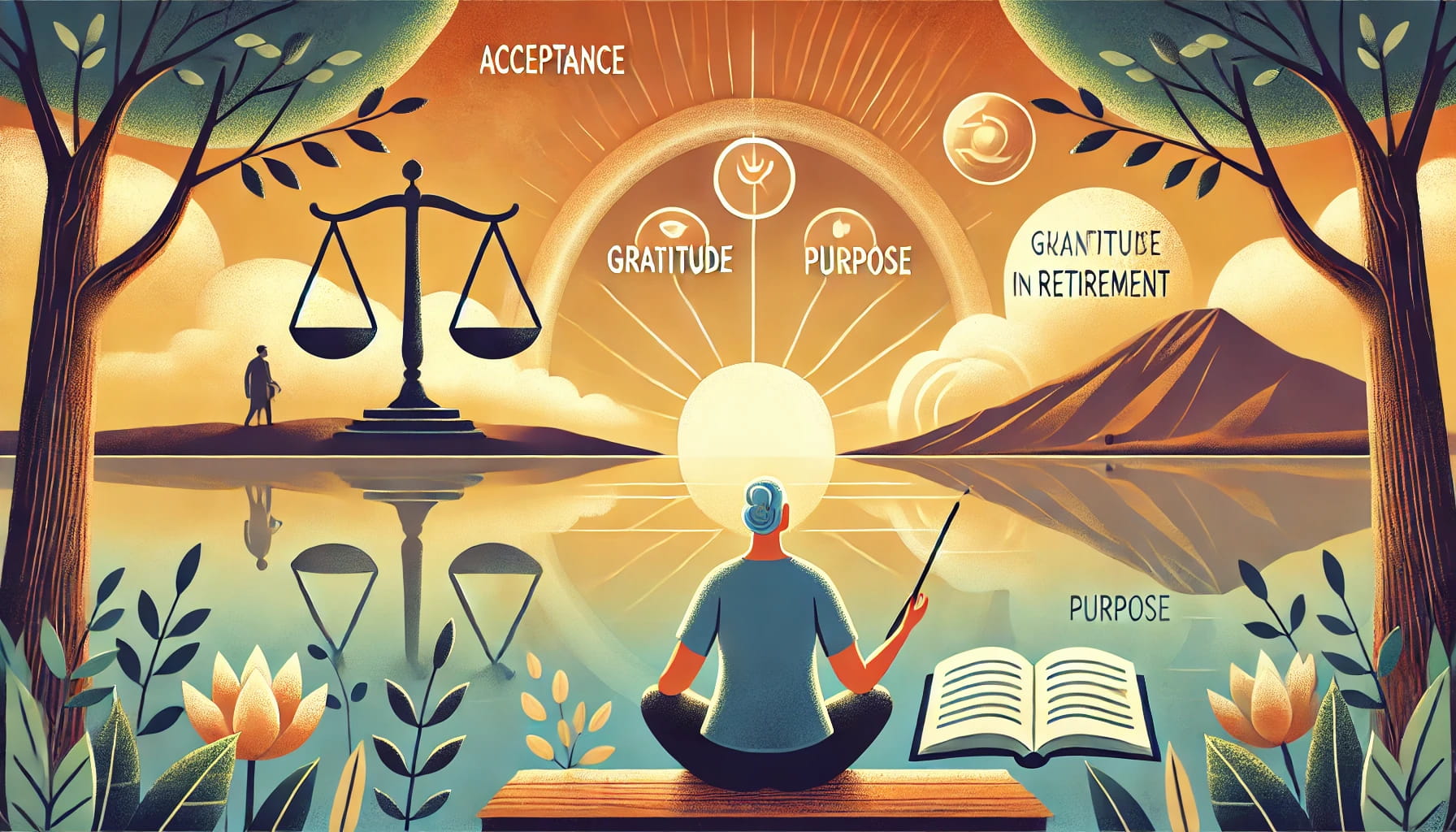Retirement marks a significant transition in life, offering opportunities for rest, reflection, and the pursuit of new passions. However, it can also bring challenges such as loss of routine, identity shifts, or uncertainties about the future. Stoicism, an ancient philosophy emphasizing resilience, self-discipline, and acceptance, offers retirees valuable tools for navigating this chapter with equanimity. By focusing on what is within their control and cultivating gratitude for the present, retirees can embrace this phase of life with grace and purpose.
This essay explores how Stoic principles can guide retirees in finding balance, meaning, and fulfillment during retirement.
Retirement Through a Stoic Lens
Stoicism encourages individuals to view life as a series of transitions, each with its own opportunities for growth and reflection. For the Stoics, the ultimate goal is to live in harmony with nature and accept life’s changes with composure. Marcus Aurelius, the Roman Emperor and a Stoic philosopher, advised, “Do not despise what you have… now is the time to act well.”
Retirement, seen through this lens, is not an endpoint but a new beginning—a chance to act well by focusing on personal growth, relationships, and virtuous living.
Stoic Principles for Retirees
- The Dichotomy of Control
A foundational Stoic principle is distinguishing between what we can and cannot control. In retirement, this means accepting changes such as aging or shifting roles while focusing on areas where we can still have agency, like health, relationships, and personal growth. For instance, while retirees cannot change the past or control external events, they can choose how to spend their time, approach challenges, and care for their well-being. - Living in Accordance with Nature
The Stoics taught that aligning with nature involves embracing life’s natural rhythms, including aging and transitions. Retirement offers the opportunity to slow down, connect with loved ones, and pursue meaningful activities that align with one’s values. By viewing retirement as a natural stage of life rather than a loss, individuals can cultivate peace and acceptance. - Practicing Gratitude
Gratitude is central to Stoicism. Seneca wrote, “He is a wise man who does not grieve for the things which he has not, but rejoices for those which he has.” Retirees can focus on the blessings of this stage—freedom from work, time for hobbies, and the chance to deepen relationships.Practicing gratitude through journaling or daily reflections helps shift focus from what is lost to what remains meaningful. - Embracing Purposeful Action
Retirement is an ideal time to engage in praxis, or purposeful action. Whether through volunteering, mentoring, or pursuing creative passions, Stoicism encourages individuals to act with intention and contribute positively to the world.
Practical Stoic Exercises for Retirees
- Daily Reflection
Begin and end each day with moments of reflection. In the morning, set intentions for how to spend your time meaningfully. In the evening, review your actions, celebrating successes and identifying areas for growth. - Negative Visualization
Practice imagining life without current blessings to cultivate gratitude and resilience. For example, reflecting on the impermanence of health or relationships can deepen appreciation for the present. - Mindful Presence
Retirement offers the gift of time, making it an excellent opportunity to practice mindfulness. Focus fully on each activity, whether enjoying a meal, spending time with loved ones, or pursuing a hobby. - Set New Goals
Retirement doesn’t mean the end of goal-setting. Use Stoic principles to establish goals that align with your values, such as lifelong learning, community service, or self-improvement.
The Benefits of a Stoic Retirement
Applying Stoic principles to retirement offers several benefits:
- Emotional Resilience: By focusing on what is within their control, retirees can navigate challenges with calmness.
- Renewed Purpose: Engaging in purposeful actions brings a sense of fulfillment.
- Deeper Gratitude: Stoic practices foster appreciation for the present moment and life’s blessings.
- Inner Peace: Acceptance of life’s natural transitions reduces anxiety and regret.
Conclusion: A Stoic Approach to Life’s Next Chapter
Stoicism provides a timeless framework for approaching retirement with equanimity and purpose. By embracing the principles of acceptance, gratitude, and intentional action, retirees can navigate this phase of life with resilience and joy.
As Marcus Aurelius wrote, “You could leave life right now. Let that determine what you do and say and think.” Retirement, seen through the lens of Stoicism, becomes an opportunity to live intentionally, cherish the present, and cultivate a legacy of wisdom and virtue.

